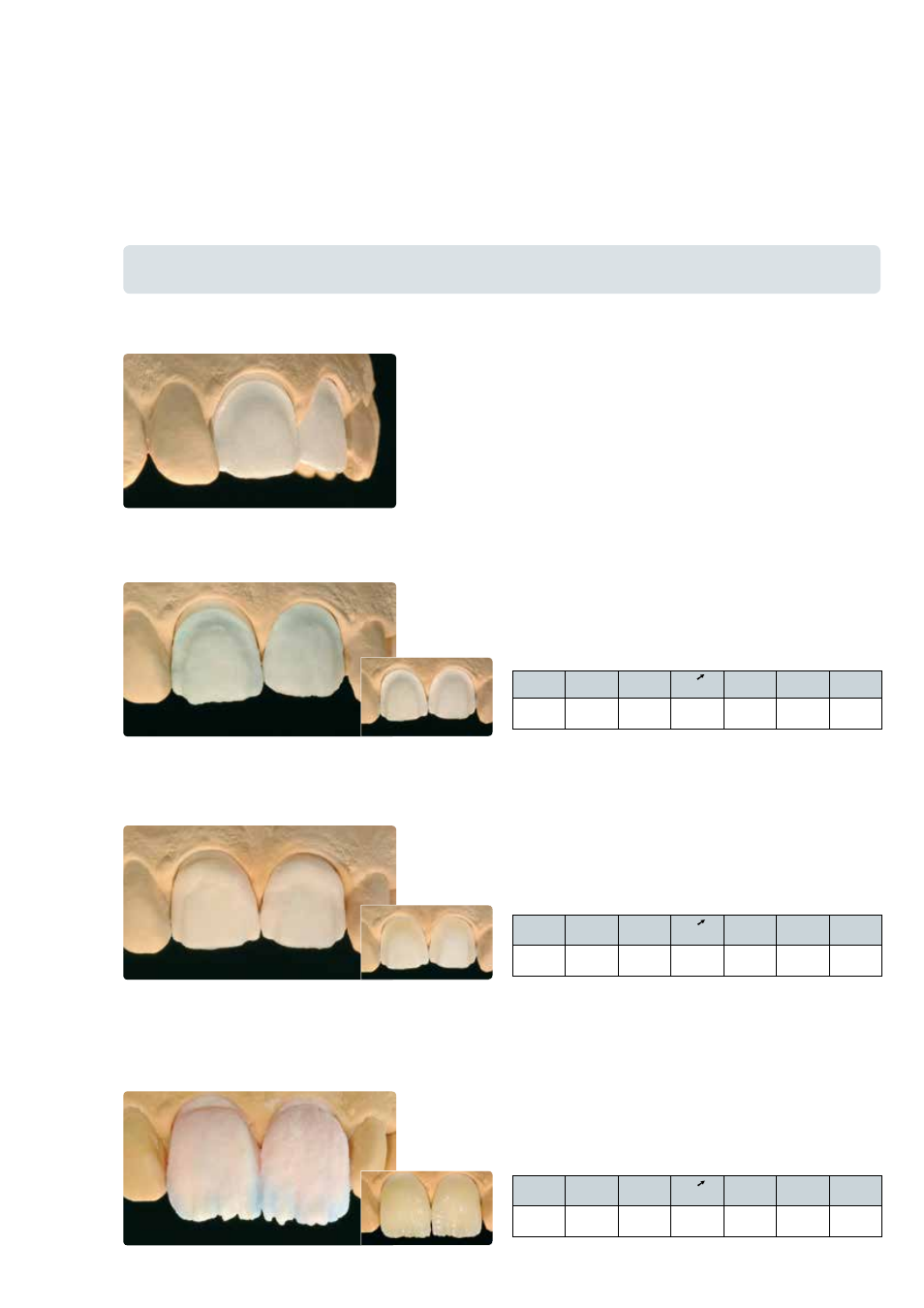Inline, Veneers – Ivoclar Vivadent IPS InLine System User Manual
Page 70

70
InLine
®
– Veneers
IPS
The following chapter shows the step-by-step layering of veneers on refractory dies.
Important: After each working step, the master model has to be immersed in water for about 5–10 minutes, depending
on the size.
tip:
For the veneer fabrication, smaller working steps and several intermediate firing cycles are recommended.
Model fabrication
Fabricate a duplicate model using a commercially available refractory
die material, e.g. BegoForm
®
from Bego, Cosmotech VEST from GC
or G-CERA
TM
VEST from GC (observe the instructions of the
manufacturer).
Important: Correct processing and properly degassed dies are an
important prerequisite for accurately fitting veneers.
Wash firing
After degassing the refractory dies, apply IPS InLine Add-On mixed
with the IPS InLine System Glaze and Stains Liquid in a thin layer
and fire.
firing parameters for IPS InLine Add-On / IPS InLine System
Glaze
T
°C/°F
B
°C/°F
S
min
t
°C/°F/min
H
min
V
1
°C/°F
V
2
°C/°F
830/
1526
403/
757
4
60/108
1
450/
842
829/
1524
cervical firing
Build up the marginal areas using a mixture of IPS InLine Dentin
and, for example, Occlusal Dentin brown.
firing parameters for the cervical firing
T
°C
B
°C
S
min
t
°C/ min
H
min
V
1
°C
V
2
°C
940/
1724
403/
757
8
60/108
1
450/
842
939/
1722
dentin/Impulse firing
Internal layering is modelled to the natural characteristics and con-
sists of a dentin build-up and various effects. Individual layering with
the Impulse materials enables mamelons, opalescence and translu-
cent effects to be achieved.
firing parameters for the dentin / Impulse firing
T
°C
B
°C
S
min
t
°C /min
H
min
V
1
°C
V
2
°C
940/
1724
403/
757
8
60/108
1
450/
842
939/
1722